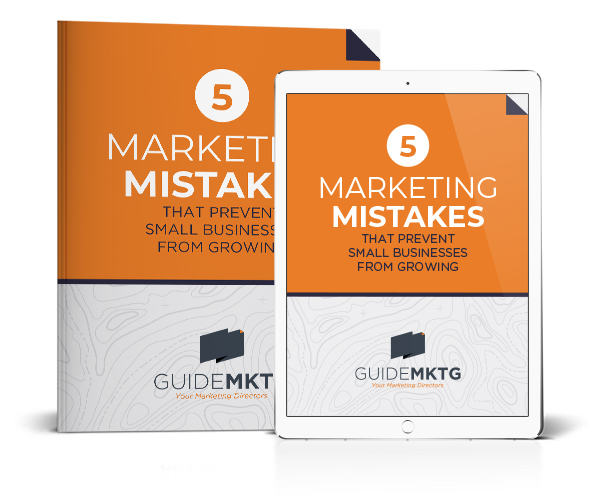Is SEO worth the effort for small business owners? In short, most definitely yes. Many people write off SEO as confusing tech speak that only online marketing gurus can possibly master. The good news is, you don’t have to become an SEO expert to use it to your advantage. This comprehensive guide for small business SEO will help your website achieve those much-coveted search engine rankings and the free advertising that comes with it.
What is SEO?
What is SEO, you ask? SEO stands for search engine optimization.
In simple terms, it means you create high-quality online content that effectively answers a question someone would type into a search engine. When Google ranks web pages, they look at 200 different factors but if you focus on these 4, you’ll already be way ahead of the competition:
- Use good keywords.
- Write great content.
- Have an organized post or page.
- Use links to your advantage.
Why is SEO valuable for small business owners?
SEO is a worthwhile investment for local or small businesses because it can get you free advertising. Ranking near the top of search engine results pages gives you a stream of referrals that you don’t have to hunt down on your own.
If you’re a small business with a physical location or a company who works with people in a specific location, you already have an SEO advantage. Instead of competing against the entire world, you only have to compete with the other businesses in your local search results. If you regularly implement local business SEO strategies like:
- Claiming and optimizing your Google My Business listing.
- Creating content that mentions your city or region.
- Building backlinks through local partnerships, sponsorships, and events.
You will improve your chances of climbing up the search results and getting that coveted spot at the top. To help you do that, here are four general tips you can use to help your small business rank using search engine optimization for small businesses.
4 Small Business SEO Tips
Ultimately, SEO can be as simple or as complex as you want it to be. You don’t have to be an expert in all of it to get results. The more often you implement these 4 tips, the better your chances will be.
On the other hand, none of these tips will instantly boost you to the #1 spot. SEO strategy takes time. So, choose a tip or two from this list to try out and then build up from there. It is never too late, or too early, to start building a foundation that can reap benefits for years to come.
Tip #1: Choose Quality Keywords
One of the most important parts of SEO is selecting the right keywords to target. Keywords are essentially the words or phrases someone would type into a search engine to find your answer or solution. Instead of writing about an incredibly broad topic, you want to target more specific long-tail keywords.
For example, if you run a coffee shop, a blog post or webpage about coffee shops isn’t going to bring you more customers. You’ll just be lost in a sea of other blog posts about coffee shops. However, if you write about the “best organic coffee shops in Seattle” you will have a much better chance of showing up in local searches.
How to Find Good Long-Tail Keywords
Before you write a blog post or create a webpage, do a little research to discover what questions your target audience has about the topic you have in mind. Use:
- Answer the Public
- Related searches on Google
- Facebook groups and comments on social media
to gather a list of related questions and ideas. Then, use that information to determine the main focus for your content. Lastly, you’ll want to run potential keyword phrases through free keyword ranking tools like:
Choose a phrase with a low amount of competition so that your SEO efforts are more likely to get results.
Once you have chosen your long-tail keyword, you’ll want to use it in a few specific places, like in the:
- Title of your blog post or webpage
- Meta description
- First paragraph
- Body of your content
There is no need to stuff the page or blog post with that exact word or phrase. You just want to use it enough to ensure that potential customers know exactly what your page is about.
If you are able to add the Yoast website extension to your site, it will scan your content to let you know how many times you should use your keyword for the length of your text. They also provide a helpful SEO checklist that reminds you of all the places you should include your target keywords.
Tip #2: Write Great Content
Once you know what you are going to write about, you want to provide the best possible answer on the internet. That doesn’t mean you need a monstrous 5,000-word blog post. You just need to include enough information to fully answer the question.
Some SEO experts refer to this as user intent. Basically, you want a potential customer to come to your webpage and find all the answers they were searching for.
Use the related questions and ideas you gathered during the research phase to help plan your content.
You can also look at search results for the long-tail keywords you plan to write about and glance over the first 5 articles.
Your intent is NOT to copy these articles. You are merely checking out the competition.
Jot down how much information other posts included and any aspects you believe you can explain better.
For example, if the blog post currently ranking at #1 lists 5 tips for growing a container vegetable garden, try to include at least 7 tips in your post about the same topic.
Tip #3: Use Headings
People don’t read, they skim. Long blocks of text will drive people away from your website, no matter how great the content is.
Adding headings to your content not only improves the reader’s experience but also helps with Google rankings. (It’s basically a 2-for-1 deal you don’t want to pass up.)
Headings come in different sizes, from H1-H6. You should use them almost like file folders within your blog post or webpage.
- H1 is the main title or the big file box.
- H2 headings are the main sub-points, kind of like the file folders.
- H3 headings are the envelopes holding groups of papers together within the folder.
- H4 and beyond are like the paperclips you have grouping sheets of paper together within each envelope.
You only want one H1 heading per post but there is no limit around how many H2-H6 headings you can have. Strive for enough headings to keep your text organized and skimmable.
According to Yoast, if a section of text has more than 300 words, you should also use a heading to separate the block of text into smaller sections.
Tip #4: Add Links
Links to and from your website give it power, domain authority, as the online world likes to call it. There are two types of links you should know about, backlinks and internal links.
Backlinks
Backlinks is the fancy SEO term for links from another website to your website. Every time someone links out to your page, it tells Google that you have valuable content they should pay attention to. When you are linked to other websites with high domain authority, your website’s credibility (in Google’s eyes) grows even more.
The most natural way to get backlinks for your site is to write guest posts or collaborate with other professionals in your field. When you write your biography for the blog post or podcast episode, include a link to your website. Once it is published, you’ll have a backlink.
Sharing your content on social media platforms also creates backlinks to your site. Basically, the more you share your content online, the more backlinks you get.
However, that does not mean you should pay for backlinks or use other potentially spammy ways to gain links online. Look for genuinely helpful places to share about your business online. As with anything, quality is even more important than quantity.
Internal Links
These links are just as important as backlinks but much easier to obtain because you can create them yourself. When you write a blog post, add links to related content within the post.
Some people include a section at the bottom of their blog posts that says “Related Posts” with a few relevant options. Others choose to link to related content within the body of their post as an additional resource.
This will improve user experience by making it easier for visitors to find additional content. It also creates a clear website structure and helps search engines understand how to categorize your site.
You want to include at least one internal link on each webpage or blog post. There is no limit to how many internal links you include but be sure to prioritize your potential customer’s experience over pleasing the SEO gods (i.e. add more valuable information than links).
Small Business SEO Made Easy
Although it takes time and consistent effort to see results, the benefits of improving your online visibility and organic traffic are definitely worth it for small businesses. By implementing the tips outlined above, you can create a successful small business SEO strategy that drives traffic to your website and potential customers into your sales funnel.
If you don’t have time to do keyword research and craft great content, schedule a call with Guide MKTG. We will write your content for you and help you create a solid small business marketing plan that gets results.





